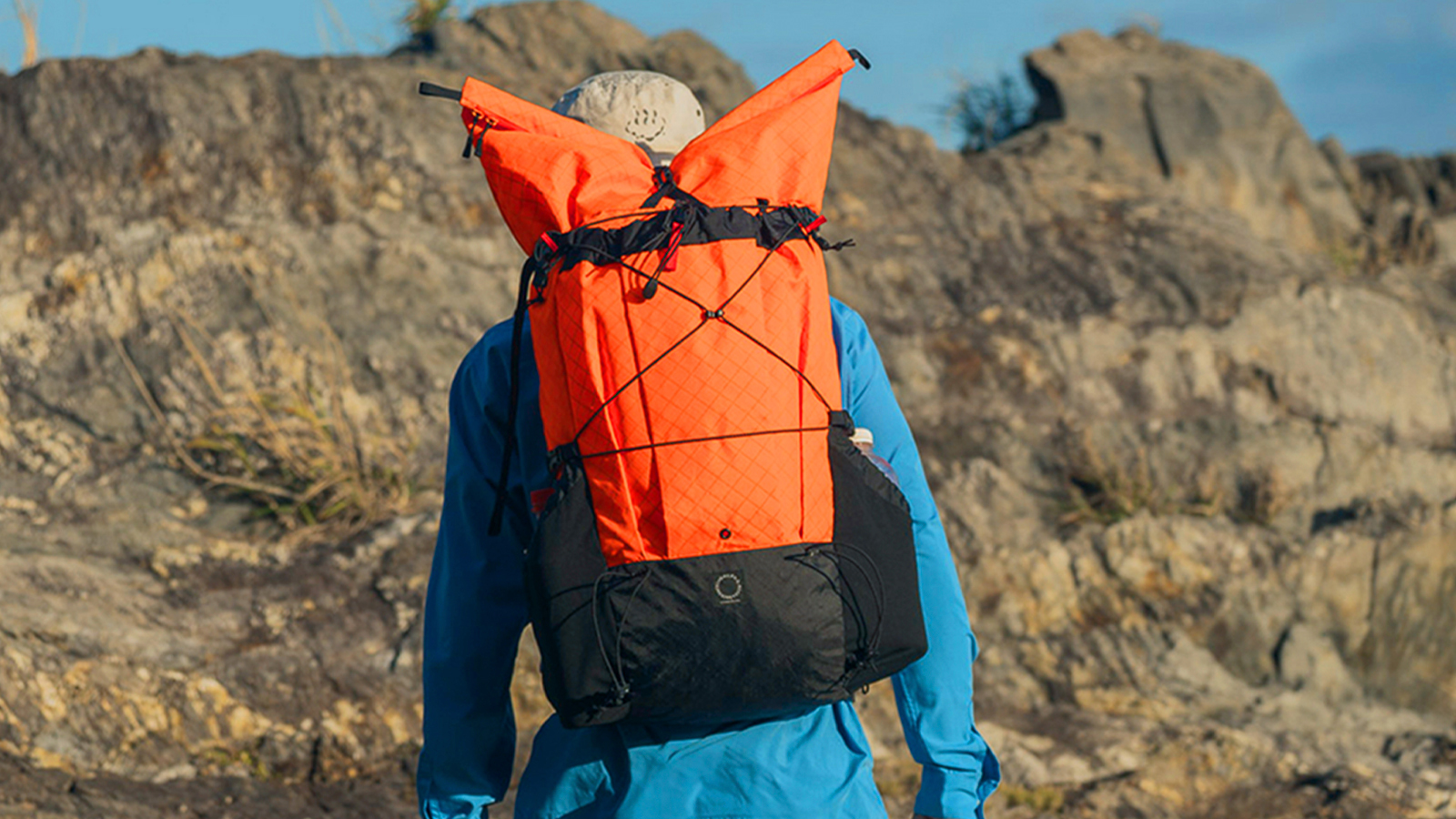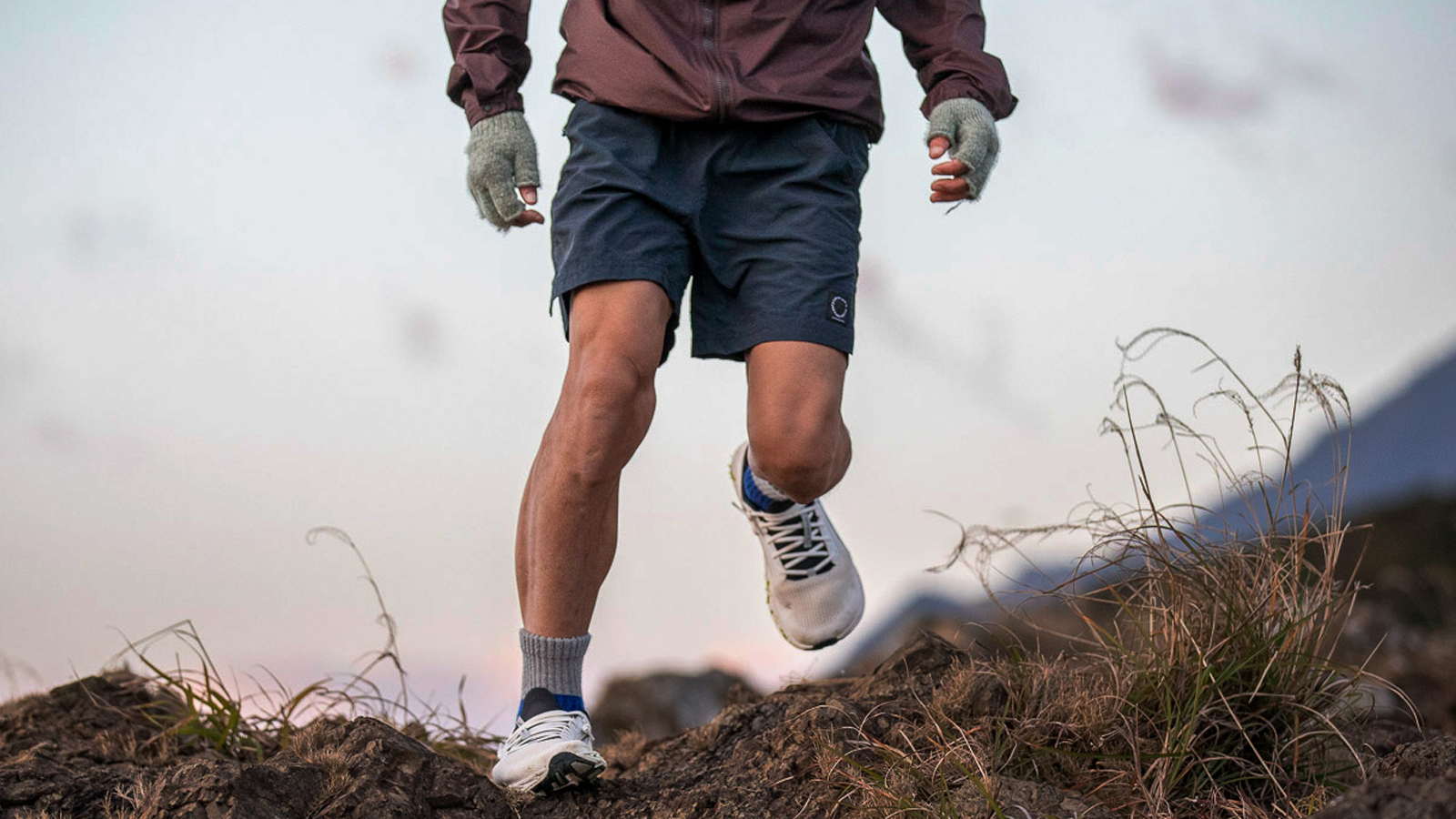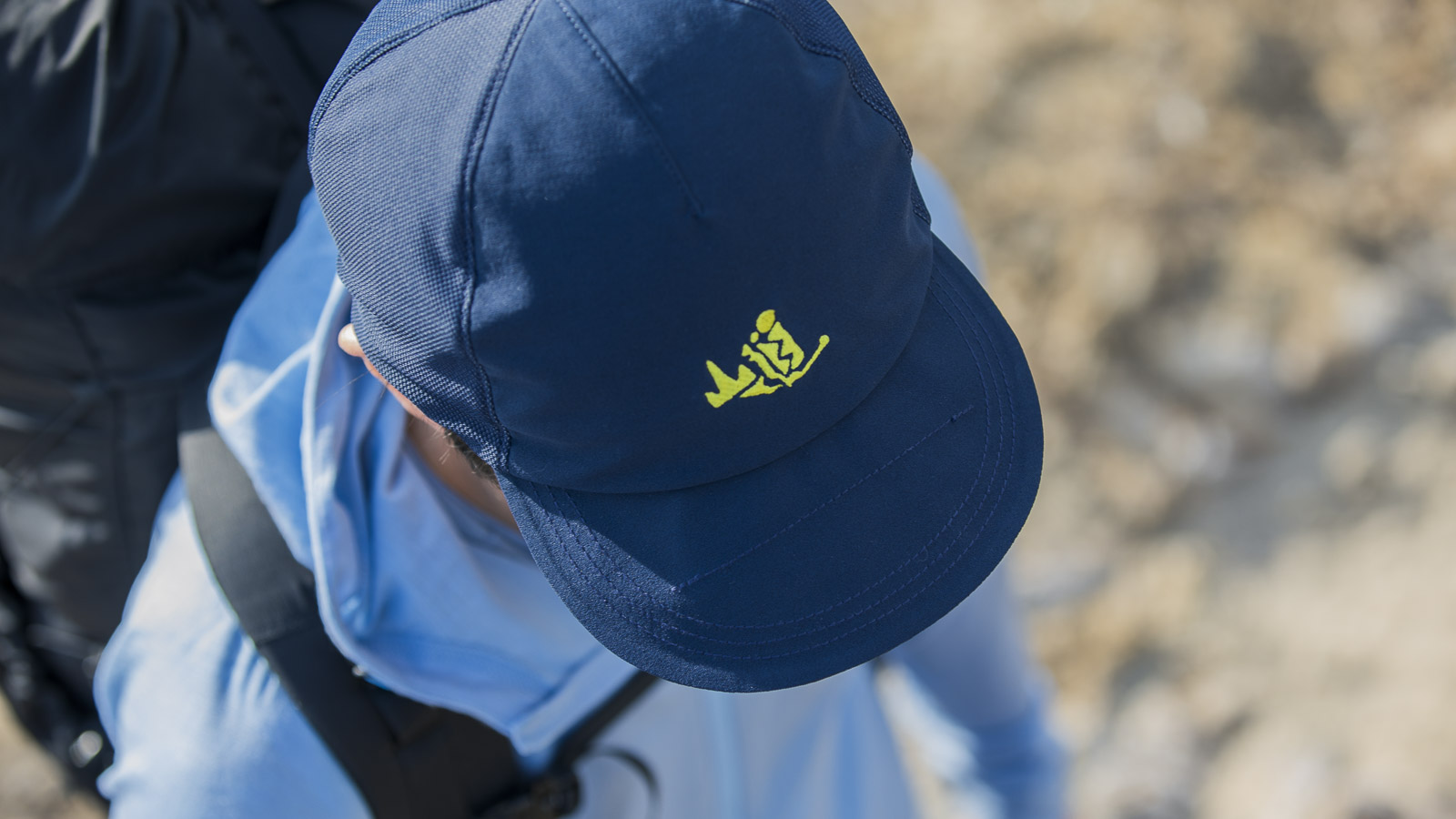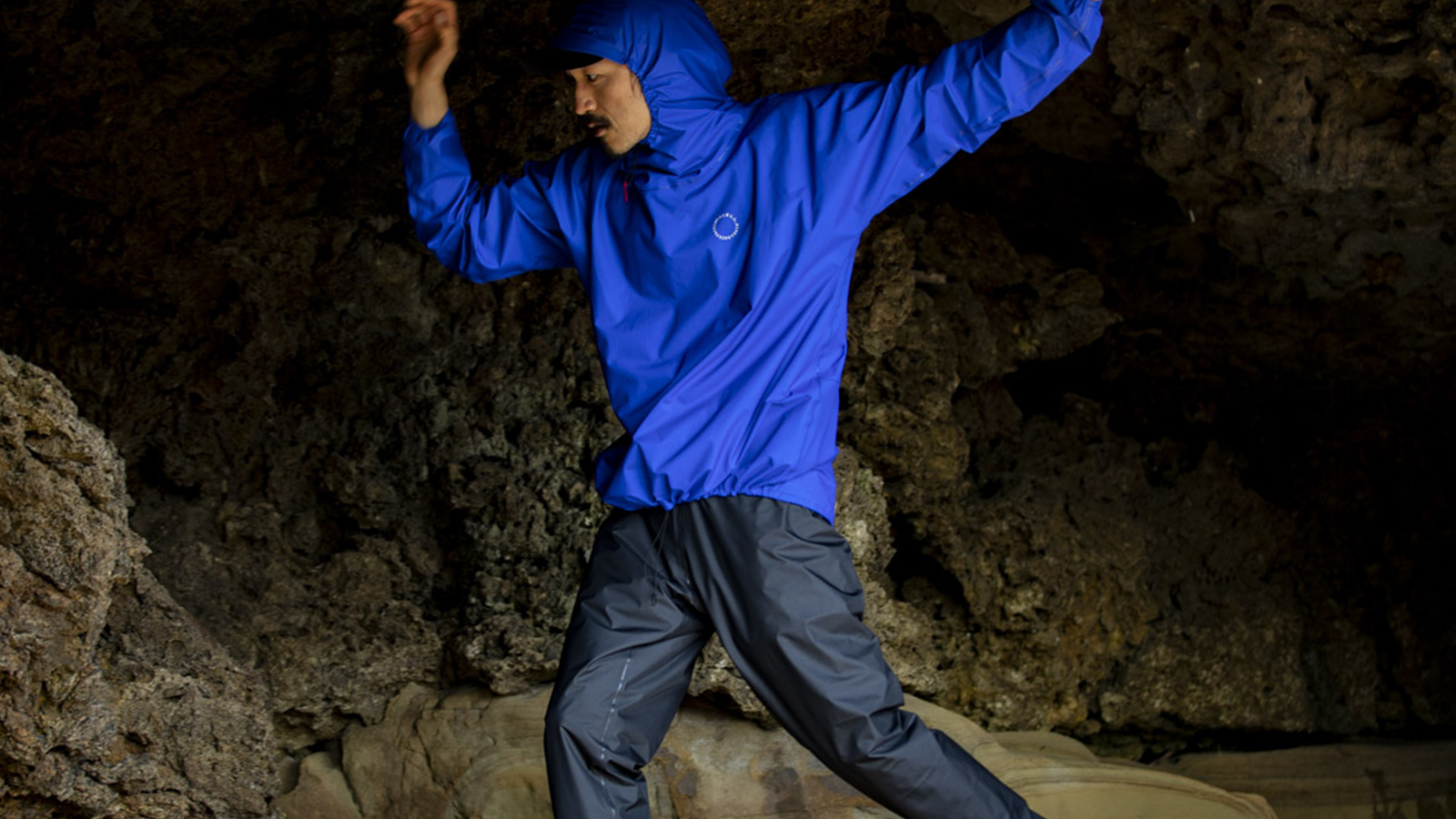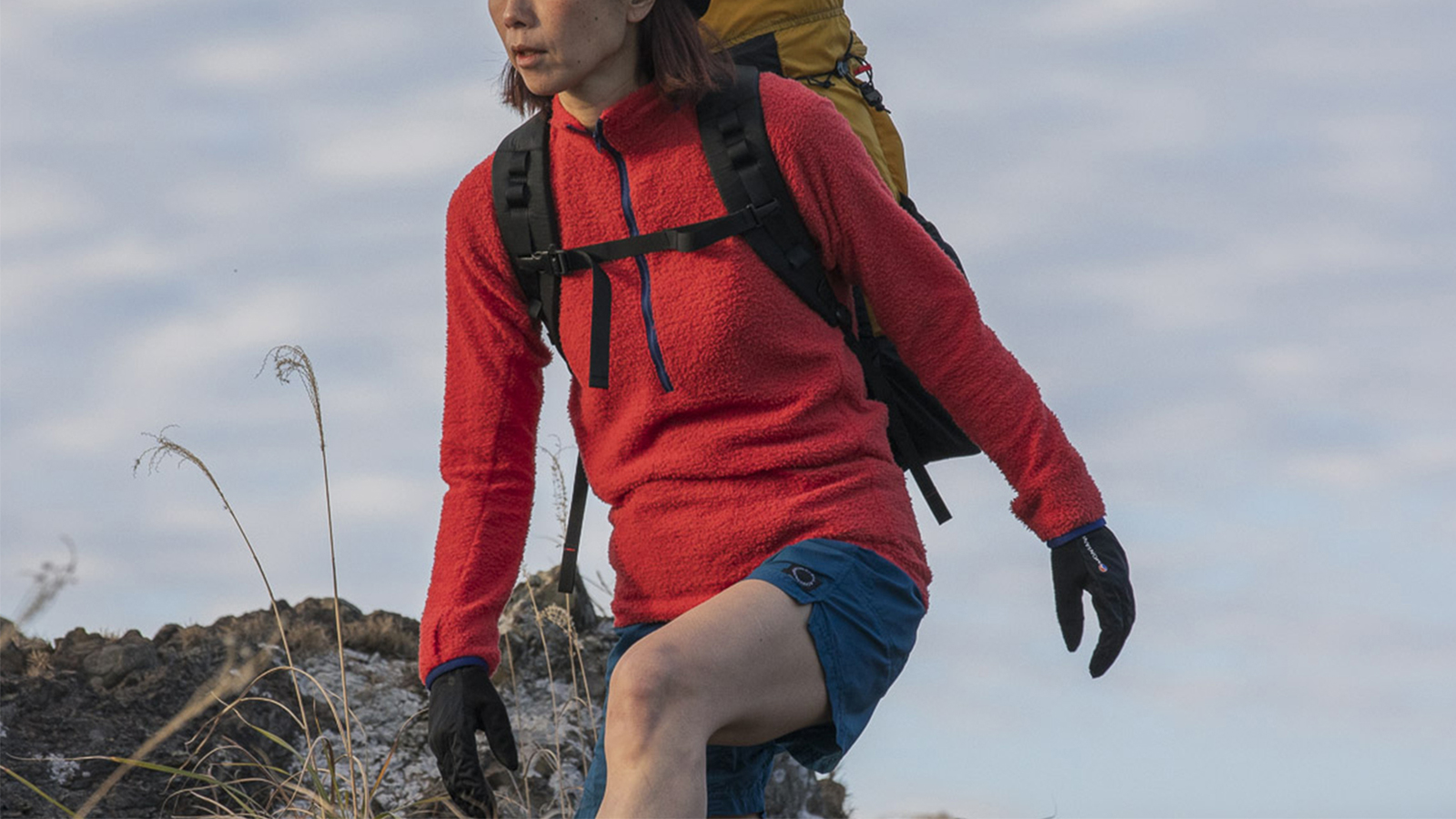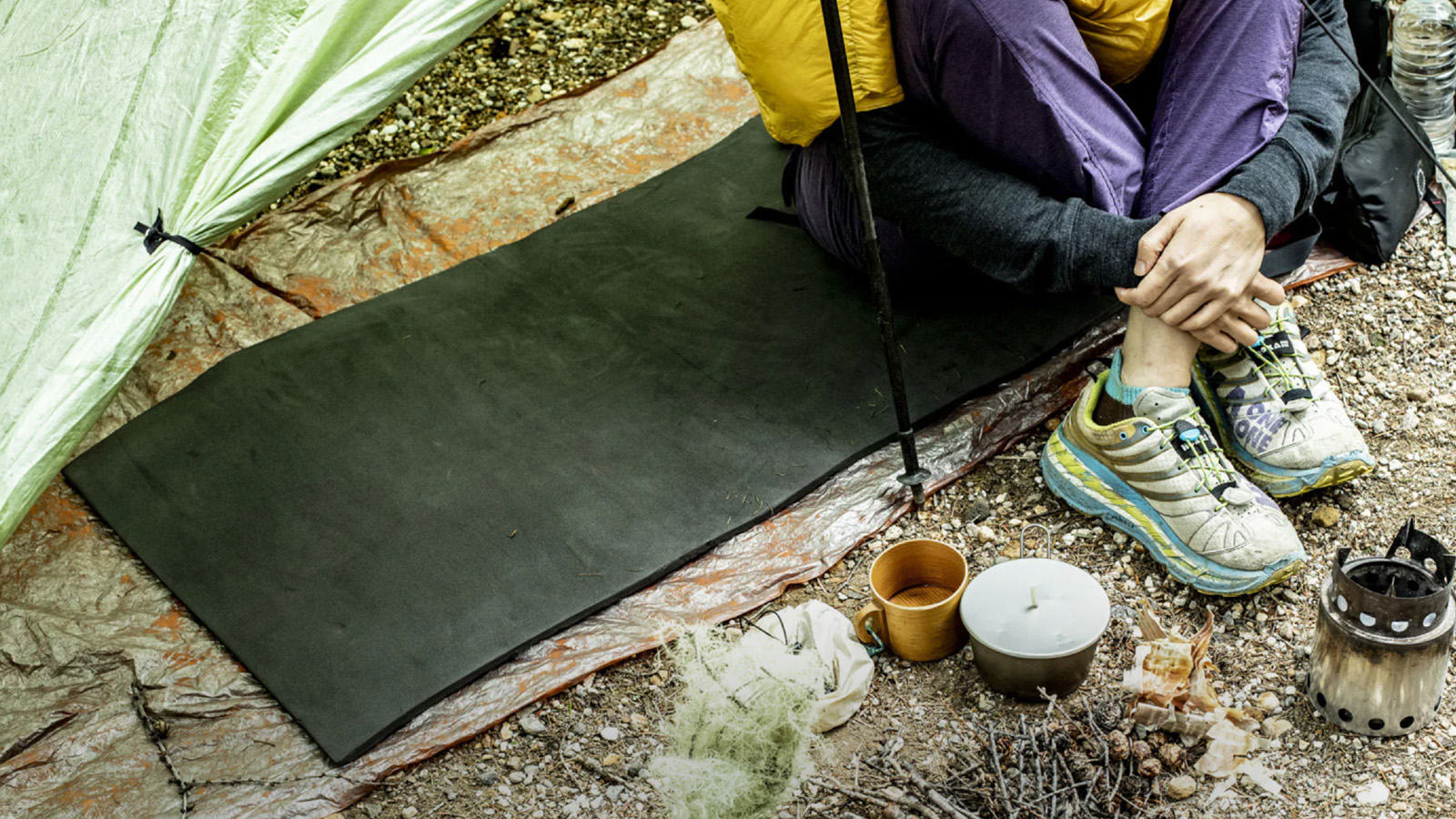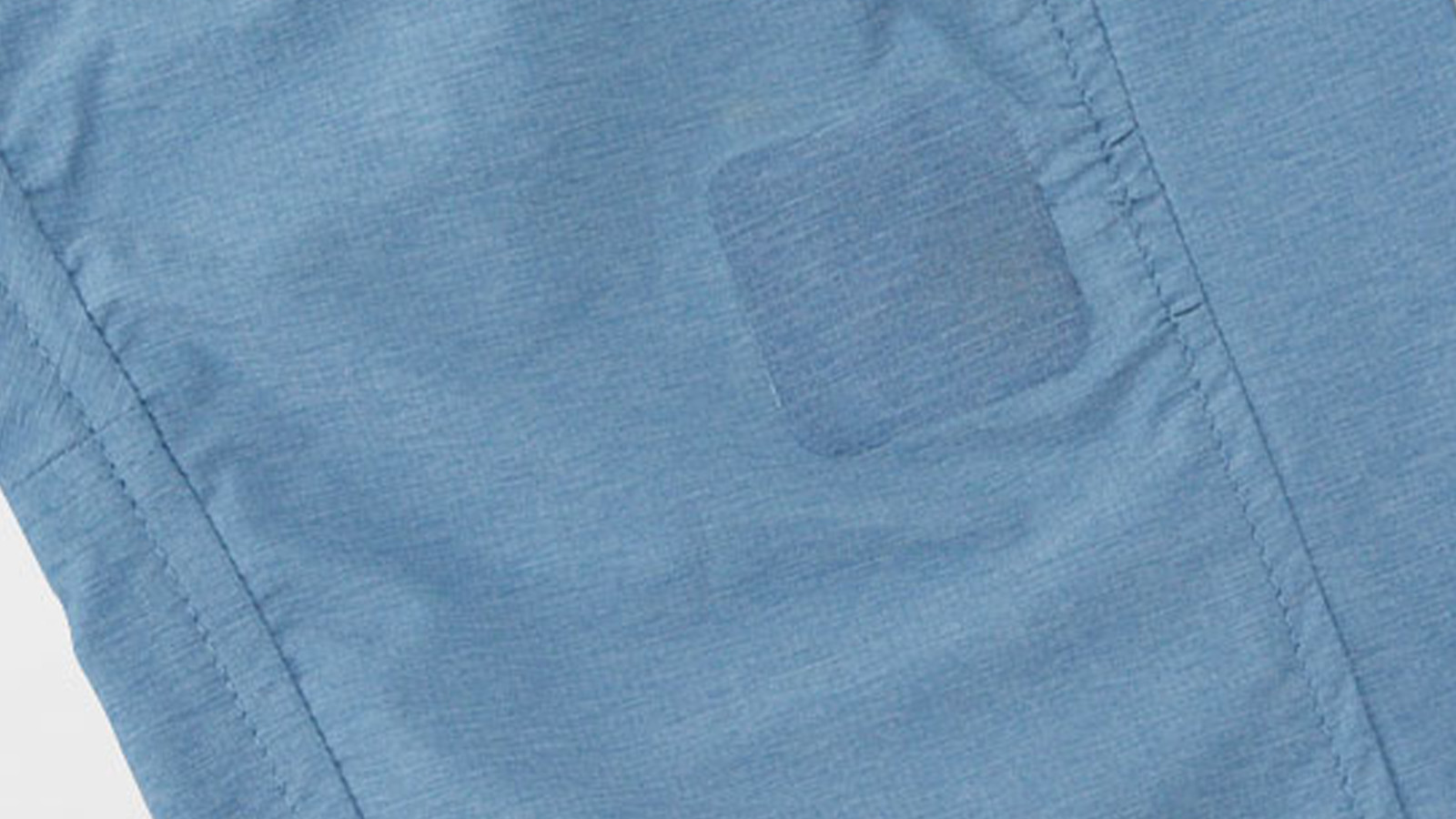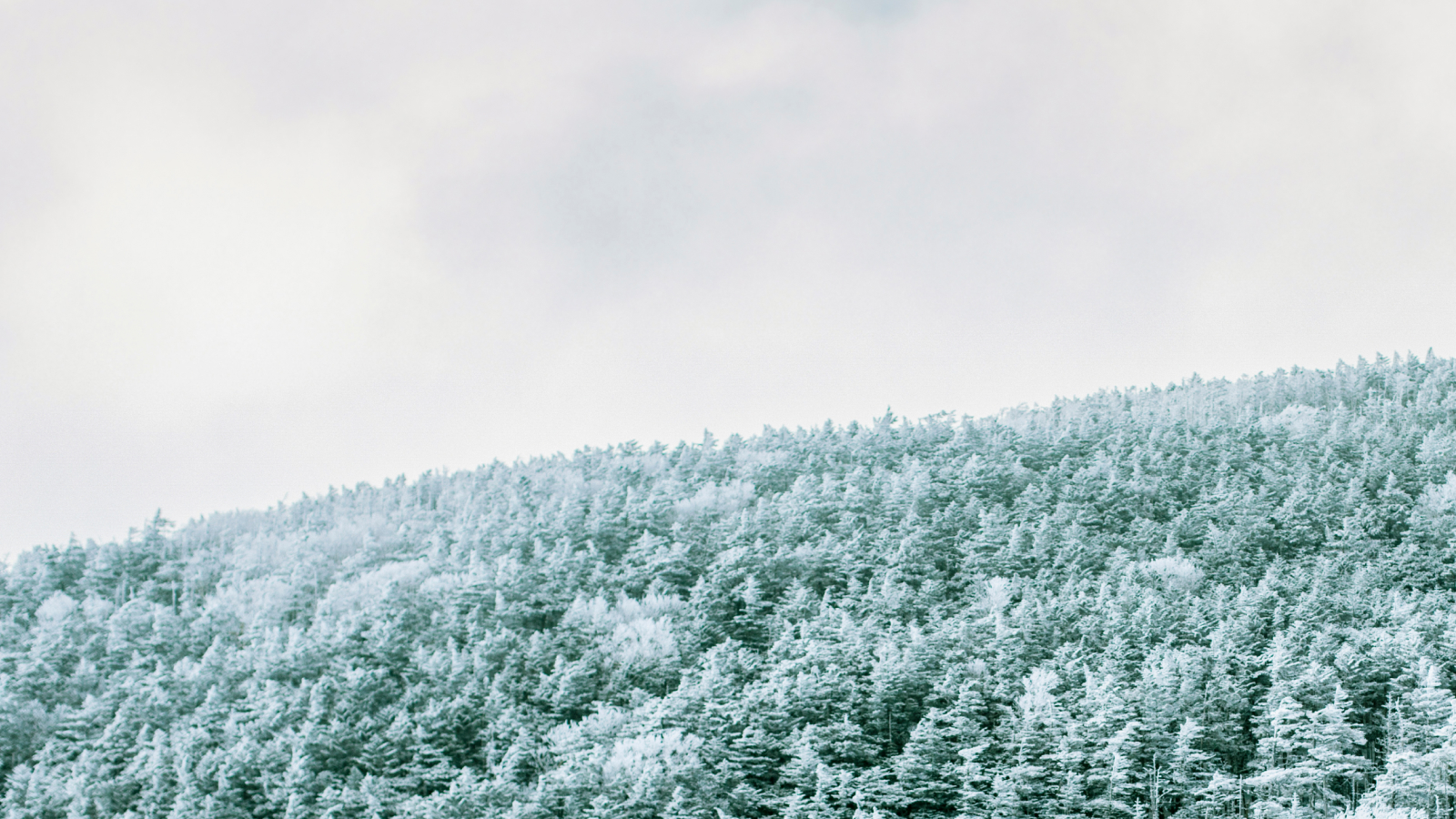All-weather Activewear #2
All-weather Activewear #2
- Outstanding Breathability
- Test Outline
- Test Outline of Three Jackets
- Shield Air, Overwhelming Dryness
(UL All-weather Hoody) - Pertex Shield, Feeling the Most Stuffy
(UL Rain Hoody PU Shinsui) - Shield Pro, Heat Retaining and Breathable
(UL Rain Hoody PU Sosui) - Comparison by Data
- Considerations based on the results
In our continued search for the ultimate gear, our Yamatomichi Lab has been looking at nanofiber membranes to keep you dry!
In this second installment of the series on rainwear, our chief researcher, Takahiro Watanabe, performs a detailed test on our three different kinds of rainwear all using fabrics using moisture-permeable, waterproof technologies;
1) Hydrophilic non-porous (Pertex Shield)
2) Hydrophobic porous (Pertex Shield Pro)
3) Nanofiber (Pertex Shield Air)
The test was conducted on a treadmill in a hypoxic room with a room temperature of 18 degrees Celsius and an oxygen concentration set to 2,500 meters above sea level. The results clearly showed the unique features of each material.
We hope this report provides insight on the pinnacle of current ultra-light and extremely breathable rainwear.
Outstanding Breathability
Test Outline
The UL All-weather series uses the Pertex Shield Air nanofiber membrane, which offers high breathability (not usually found in conventional rainwear) without sacrificing lightness. This means it can be worn at all times, even during high-intensity activities when traditional rainwear would get too hot and stuffy.
In order to verify the actual performance, we also tested Pertex Shield, a hydrophilic non-porous material, and the Pertex Shield Pro, a hydrophobic porous material, by actually wearing them and measuring how the temperature and humidity inside the garments changed.
Tested Products
- Yamatomichi UL Rain Hoody PU Shinsui (Pertex Shield)
- Yamatomichi UL Rain Hoody PU Sosui (Pertex Shield Pro)
- Yamatomichi UL All-weather Hoody (Pertex Shield Air)
Environment
A hypoxia room set to about 18 degrees Celsius (equivalent to 2,500 meters above sea level with an oxygen concentration of about 15%), with a fan providing a light breeze.
Test Method
Two temperature/humidity sensors were placed on the right and left sides of my chest (one each) without touching my skin. The experimental fabric was worn over a 100% merino wool base layer while running for 30 minutes on a treadmill set at an incline of 15 degrees and a speed of 6km/h.
Other details
- All products were the same size (Size M).
- To avoid my heart rate and perspiration from being affected by fatigue due to repeated exercise, only one fabric was tested per day (All tests began at the same time of day).
- All base layers were of the same size and manufacturer (short sleeves, 100% merino wool), as well as pants, shoes and socks. The hood was not worn, and all adjustment cords were loosened to the maximum extent.
- To mitigate measurement errors, the average value of the two sensors was recorded every 30 seconds.
- The angle and air volume of the fan were constant throughout the tests. Although the room temperature was set to be 18 degrees Celsius, the difference in outside temperature resulted in slight marginal difference of the average temperature.
- In order to compare the feel of each wear, on a seperate day, I wore all three garments twice, in opposite order and performed the same exercise in the same environment.

A hypoxic room air-conditioned to be 18 degrees Celsius.

Running on an inclined treadmill for 30minutes while wearing the garments.
(Picture taken before the Rainwear test)

Base layer was soaked through after each test.
Test Outline of Three Jackets
The testing was done in an enclosed private room with a temperature of 18 degrees Celsius. The moment I entered the room, I felt a little cold with the wind blowing on me from the fan. With all three jackets, after 10-12 minutes of running on the treadmill, my heart rate reached 160 BPM. By this time, I didn’t feel the initial coldness at all. When the humidity exceeded 80% I began to feel stuffy, and when it exceeded 85%, sweat poured down my forehead.
Shield Air, Overwhelming Dryness
(UL All-weather Hoody)
The UL All-weather Hoody’s uses Pertex Shield Air, a fabric made with nanofiber technology, which is both moisture and air-permeable, making it highly breathable.
During the first five minutes of exercise, I did not feel hot or stuffy in the chest area. Since the base layer was short-sleeved, I felt some heat around my arms where the shell lining directly contacted, but it was overwhelmingly dry for a piece of rainwear. After about 12 minutes, I felt a little hot as my body temperature increased. However, I think I would have felt the same way even if I had been wearing a thin windshell or even just a base layer.
I was chilly in the beginning but that quickly disappeared as the exercise continued. In addition, I did not feel chilly after the exercise, perhaps because my sweating was suppressed from the highly breathable garment.
Pertex Shield, Feeling the Most Stuffy
(UL Rain Hoody PU Shinsui)
Next, I tested the UL Rain Hoody PU Shinsui, which uses Pertex Shield, an ultra-lightweight hydrophilic non-porous membrane.
About three minutes into my workout, I already started to feel stuffy in my chest area. Interestingly, with the fan constantly providing a breeze and the fabric being so thin, I didn’t feel so hot, until the moisture built up inside the garment. After about 12 minutes, I started to feel hot, and by the end, I was completely soaked with sweat inside the garment. The sweating and the fabric sticking to my skin were especially noticeable around my arms where the garment came in direct contact with my skin.
These hydrophilic, non-porous, ultra-thin fabrics tend to build up moisture inside, but also easily get cold when exposed to the outside, causing a cold sweat. However, you can’t deny that Shinsui is outstanding in terms of lightness, and is very useful for those sudden pours of rain up in the mountains.
Shield Pro, Heat Retaining and Breathable
(UL Rain Hoody PU Sosui)
The last one I tested was the UL Rain Hoody PU Sosui, which is made of Pertex Shield Pro, a hydrophobic porous membrane. It is not as light as PU Shinsui, but is still considered to be ultralight and has great air/moisture-permeability.
During the first five minutes of exercise, I felt more of the heat retaining capabilities rather than feeling stuffy. After that, I began to sweat as it got warmer and more humid. Unlike the Pertex Shield, the temperature inside the garment seemed to rise at first, then perspiration, and finally moisture started to build up inside. However, I ended up being soaked in sweat again at the end of my workout.
I had previously thought that Shield Pro was superior in breathability but there was a big difference in how dry I felt when compared to the Shield Air. On the other hand, heat retention is an important function of rainwear and the Shield Pro carries a great balance of moisture wicking capabilities and heat retention.
Comparison by Data
Humidity in the Fabrics
Now, let’s take a look at how moisture within the clothes increased after the tests. After 30 minutes of exercise, the humidity inside the clothes reached 94% for Pertex shield, 92% for S Pertex Shield Pro, and 84% for Pertex Shield Air. Resulting in the Shield Air maintaining 10% lower humidity than the regular Shield.
The elapsed time until the humidity exceeds 80% for each material, when I started to feel stuffy, is as follows:
Shield: 10 mins and 20 secs, Shield Pro: 10 mins and 40 secs, Shield Air: 15 mins and 20 secs
For Pertex Shield and Shield Pro, the humidity increased over time, but for Shield Air, it reached its upper limit at about 83% humidity and remained unchanged until the end. We can say that the balance of the air/moisture-permeability of the Shield Air, as well as the fan’s cooling effects, mitigated the rise in humidity inside the garment.

The horizontal axis=10 seconds a unit (the same applies thereafter).
Humidity Increase after Exercise
The range of increase in humidity in the room and the clothing was compared before and after 30 minutes of exercise. As I exercised, water vapor from sweat and my breath filled the room, increasing humidity.
As the difference in humidity between the inside and outside of the garment got closer, the moisture-permeability hindered, and the humidity inside the garment of Shield and Shield Pro increased significantly, while the humidity of the room and inside the garment when testing the Shield Air was a more gradual increase. The Shield Air was able to mitigate the moisture released from my breath and body compared to the other fabrics.

Temperature in the Fabric
The air conditioner was set at 18 degrees Celsius, and the results showed there was slight differences in temperature inside the garments. The temperature increased over time, reaching 29.1 degrees Celsius for Shield Air, 29.4 degrees Celsius for Shield, and 29.6 degrees Celsius for Shield Pro. The difference between Shield Air and Shield Pro was 0.5 degrees. Shield Air almost consistently maintained lower temperatures and was cooler than the Shield, even though the fabric is thicker.
Although Shield Air had the best results, it is important to mention that compared to the previous graph with contrasting humidity levels, all three fabrics had relatively close temperatures inside the garments. This points out that perspiration(≈moisture inside the garments) wasn’t solely brought about by the increase in body temperature from continued exercise, but was also clearly influenced by the breathability and moisture-permeability of the fabrics.

Heart Rate
There was no special fluctuation in heart rate during the multi-day testing among the three garments. This indicates that the differences in the humidity and temperature inside the garments were not influenced by my physical condition.

Considerations based on the results
The type of exercise I tested here, where the heart rate reached 160 BPM, is considered to be a high-intensity activity comparable to a series of steep climbs, running, or strenuous walks in the deep snow, and I would sweat even without a rain jacket anyway. And with rainwear on, even if I wore my highly moisture-wicking merino wool base layer, I would still get soaked on the inside. In fact, I sometimes tend to think that the role of rainwear was not to keep me dry but to keep my body temperature from dipping down because I would get soaked either from the rain or my sweat. Only, the rain, combined with the wind, would take away my body heat. Therefore, it is safer to keep the rain shell on in the rain even if it is uncomfortable.
The breathability and lightness of the Shield Air are something that sets it apart from conventional rainwear. In addition to the high breathability of the fabric itself, which keeps me dry, the lightness of the Shield Air allows outside air to enter the garment, providing a high level of ventilation. In my opinion, if the load of the exercise was lowered a little, perhaps to a heart rate of 140 BPM, the humidity inside the garment would be kept in the 70% range, and I would be able to continue exercising without sweating and maintain dryness.
In addition, less sweating means less consumption of energy and water, which allows you to preserve stamina even in situations when supplies can be limited. *This may be interpreted that Shield Air is more than comfortable but also performance enhancing in terms of an increase in distance and safety.
*We expected that the heart rate would be kept at a low rate with the suppression of sweating, but this was not the case. This was a good finding in terms of consistency of the experimental results, but it seems that sweating alone cannot explain the mechanism of exercise load.
On the other hand, the breathability of Shield Air may have a negative effect in cold environments. Is Shield Air too cold because it’s too breathable? Well, I have walked on Mt. Yatsugatake in strong winds in winter with a NeoShell jacket, another type of nanofiber, without any problems, and I have realized that superior breathability does not mean inferior wind protection. In such a windy and cold environment, it is necessary to be creative in the layering of any rainwear, including Shield Air.

In addition to the three Pertex fabrics we tested, we also made prototypes with other interesting materials and tested them in the field. In the future, we may release the products using interesting novel fabrics.
In the next and final installment, #3, we invited Tomoya Tsuchiya of Hikers Depot and Kei Kuwahara of Run boys! Run girls! to share their opinions on the impact of “High-performance rainwear that can be worn as at all times” with hikers and runners, how it compares and differs from existing rainwear, and examples of evolving styles of layering. We hope you will join us as we discuss these interesting topics.
To be continued in “#3: Tomoya Tsuchiya x Kei Kuwahara x Yamatomichi Lab Trilogy”

Researcher
In charge of research, including materials and the general outdoor market. After working for various design companies, Takahiro participated in the establishment of a marketing company. Currently involved in various research and data analysis. Also works on travel-related tasks such as operating a travel information site (tabinote.jp) and writing guide articles. His favorite style of hiking is walking for 2 days straight with no sleep. Occasionally participates in trail running races.







